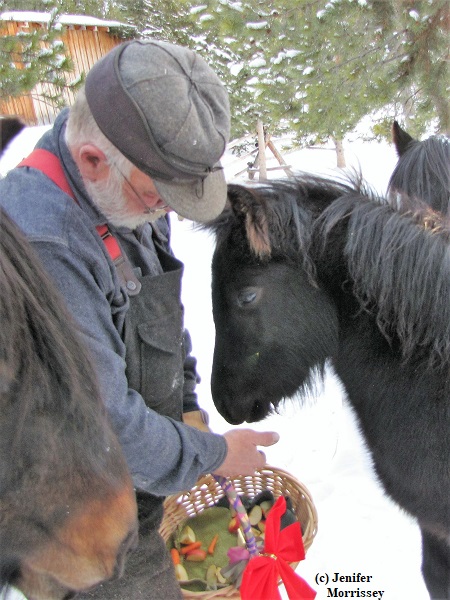I’ve just put the finishing touches on a new book on equine draft harness, so I’m facing the term teamster quite often. In the past, I’ve done significant draft work with my ponies, and there are a number of photos of my ponies at work (or as models for harness) in the book. This year, though, I’ve spent a lot more time thinking about packing with my ponies than working them in harness. Which got me thinking about words. When someone puts their draft horses to work, they’re called a teamster. But when someone puts their ponies to work, what are they called?
Yes, when we put our ponies to draft work, we can be called teamsters. And when we pack our ponies, we’re packmen or packwomen. And when we drive or ride, we’re drivers or riders. But I wondered, what would the word be to encompass all the ways that a single pony and person can work together?
Ponies seem to me to be unique in this regard. They are so versatile – ride/drive/draft/pack and maybe more – that a single person-pony pair can do many things together. On the other hand, there don’t seem to be many people doing this range of work with their ponies, or maybe they’re too busy working together to make their accomplishments public!
We were talking to a rancher the other day, and he told us about a wonderful horse he’d owned until it died of old age. “The worst thing about a horse like that,” he said, “is you spend the rest of your life trying to find another one as good.” We commiserated about the truth of that statement and shared a few stories back and forth about our once-in-a-lifetime partners. Mya the Wonder Pony is the one I shared about; she still sets the standard in terms of heart when it comes to work and also willingness to do just about anything I’ve asked her to do. The story about her helping me move a rattlesnake when I lived in southern Colorado made the rancher squirm. Like my husband, he lives here in North Park because we don’t have snakes!
I hope someone someday will tell me a word like teamster that encompasses all the ways that a single pony and person can work together. After talking to the rancher, though, I’ve come up with a stand-in: lucky. When we have a pony that is willing to do a wide range of work with us including those occasional odd jobs like moving a rattlesnake, we are lucky indeed!
© Jenifer Morrissey, 2017




















